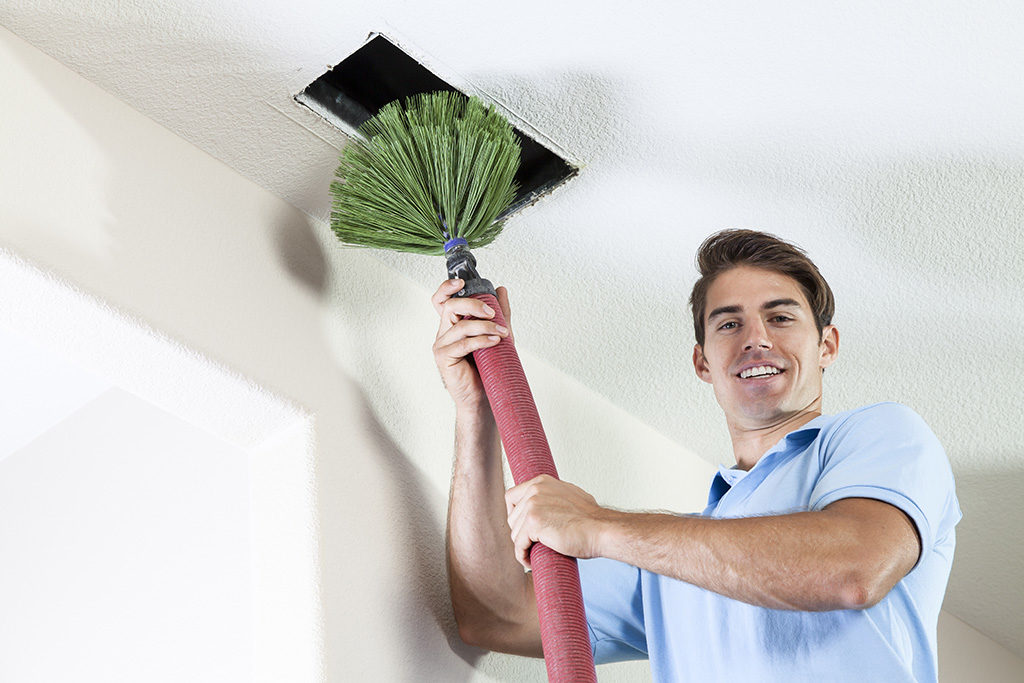
Living in a hot, humid environment certainly has many advantages. You get to enjoy the outdoors all year, you can grow plants that would die in colder conditions and it’s always a good time to hit the beach. One of the disadvantages of living in a climate like this is that these conditions are exactly right for the rampant growth of mold. Unless you take proper precautions, you may end up with mold throughout your HVAC system. This causes many problems with the value of your home and the health of you, your family and your pets. If you suspect that you have a mold problem in your air ducts, read on to find out what you should do about it.
How to Identify a Problem
You may only suspect that your air conditioner is a super highway for mold spores right now. There are a few telltale signs you can look for to confirm your suspicions before you take additional action. Examine the drywall in your home. Pay special attention to the ceilings and areas around crown molding in rooms where high humidity is common, like the bathroom and kitchen. If you see patches of grey or green, that means you have a mold problem. The spores likely incubated in your HVAC system and were transported into your home through your forced air system.
Another telltale sign that you have a mold problem is a persistent musty smell. Any odor that reminds you of an old basement is likely caused by the presence of mold. If you notice the smell more strongly every time your air conditioner comes on, the source of the mold is almost certainly in your HVAC system.
What Causes Mold
In the humid climate of Florida it is not hard for mold spores to find a place with accumulated moisture in your air ducts. Mold does not need light to grow. It only requires enough moisture and a source of food to quickly reproduce to astonishing levels. When you turn on the air, the temperature difference can cause condensation to collect on the air ducts. If you rarely have air duct cleaning done, dust, dead bugs, and pollen all settle into the ducts. These are organic materials that make the perfect mold food.
Once the mold has begun to grow in your system, the constant blasts of air through the ducts carry the spores, essentially mold seeds, through your ducts where they can settle and grow new areas of mold. These spores make their way into your home by entering through the vents.
How This Affects You
The main reason you should care that mold is growing in your home is not due to concern for the aesthetic appearance of any drywall the mold may invade. An abundance of mold causes serious health problems for all those that live in the house. Anyone prone to allergies and asthma will be the first to notice the hazards.
Coughing, sneezing, watery eyes, itchy nose and constricted breathing are the first signs that your mold is out of control. Children and adults with lowered immune systems may also notice angry, red rashes on their skin. You will begin to feel tired all the time even after a full night of sleep. Dizziness, nausea and shortness of breath are also common. These symptoms will be present in both humans and pets. Mold spores in the air are dangerous for those with asthma as it can trigger an attack.
What Testing Involves
Now that you know the dangers of a mold infestation, you may wonder what you can do about it. To confirm that you have mold, you will need a professional from an HVAC company come to your home to test your system. They will take samples to determine the type of mold and how much of it you have. From there, they can make recommendations on how best to fix the problem.
Fixing the Problem
Once the presence of mold is confirmed in your system, you should take immediate steps to stop the further spread of the spores. Begin by turning off your air conditioner. This will halt the movement of spores for the time. You then need to replace all filters and insulation that are essentially spore sponges. All hard surfaces, including the inside and outside of ducts, vents and coils, need to be cleaned with a chemical approved for removing mold from ductwork.
Missing even one step can quickly lead to a recurrence of mold growth. Mold is able to grow incredibly fast under the right conditions. The best way to ensure the mold is completely removed is to hire a professional from an HVAC company. They have the skills and knowledge to completely eliminate the growth with chemicals that can be harsh to work with for those with respiratory problems.
How to Prevent Future Problems
Once your HVAC system is mold free, keeping it that way requires precautions. Removing potential sources of food and water is the best way to ensure you never have to deal with mold again. A regular air duct cleaning and changing your filters remove the organic materials necessary for mold growth from your system. Prevent excess moisture by investing in a dehumidifier, constantly cleaning drip pans and insulating your ducts to prevent condensation from collecting. Without these sources of moisture, the mold cannot thrive.
With any home problem as persistent as mold, leaving this tricky job to professionals is your best course. Follow these steps and you can maintain an mold free home even in this moist climate.